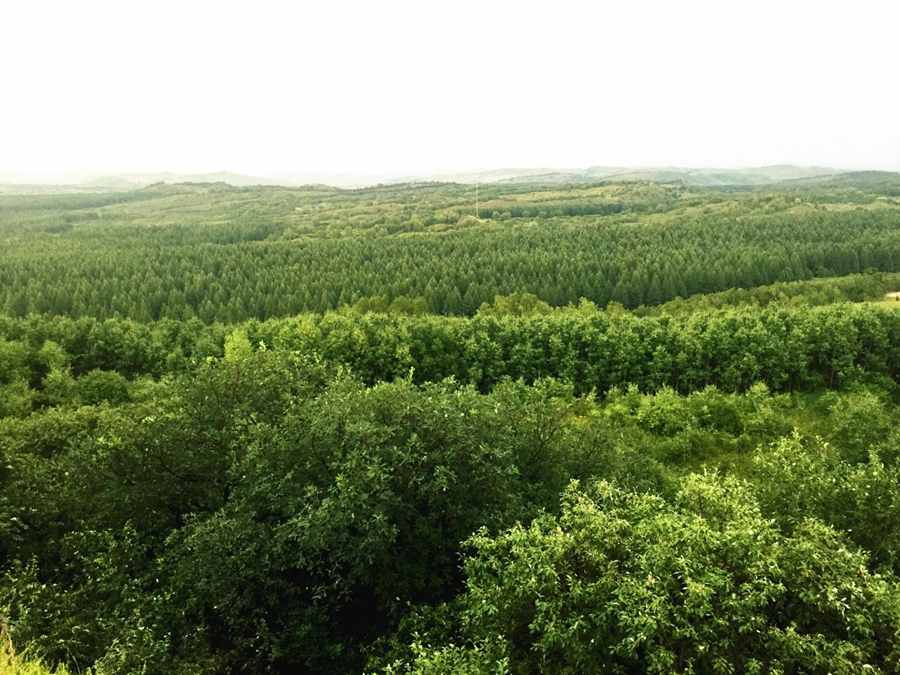


Saihanba, a 74,000-hectare forestation project in north China’s Hebei province. The forest has become a green “Great Wall” for preventing desertification and protecting water resources. Every year, more than 500,000 tourists from home and abroad visit Saihanba, bringing in about 40 million yuan ($6.06 million) in tourist revenues. Saihanba is a vivid example of China’s ecological civilization. (Photo by Pei Guangjiang from People’s Daily)
Questions are being asked about whether China’s increased air pollution inspections might affect economic growth, but, the latest statistics from the Ministry of Environmental Protection (MEP) indicate quite the opposite, that the campaign has not restricted the economic growth of cities, it has pushed it.
The inspection campaign called "2+26"was started this April in a bid to improve urban environments.
During its one-year period, inspectors are being sent to Beijing, Tianjin and 26 smaller cities in the Beijing-Tianjin-Hebei region and surrounding areas, on 25 missions to check on the implementation of pollution controls and emissions standards.
Over the past three months, they have discovered 20,000 businesses with environmental issues and dealt with 8,000 environmental violations and they have forced enterprises involved to restructure and upgrade themselves.
In July, Shandong Province in East China shut down Jinan Steel, which had an annual output of 12 million tons, to turn to service industries and modern logistic development and, its city of Jinan relocated 54 enterprises and removed 323 boilers from its old industrial zone.

Seven-Star Lake in Saihanba. (Photo by Pei Guangjiang from People’s Daily )
Data from the first half of this year showed the GDP of Jinan stood at 341.74 billion yuan ($52 billion), up 8.3 percent from last year. In the first 8 months, the city’s fixed-asset investment increased by 15.2 percent, and tax revenues by 12.4 percent year on year, topping the growth across the province.
During the same period, the city’s industrial enterprise profits increased by 10.1 percent, year on year, as new growth forces replaced old ones for industrial development.
In the first 6 months of this year, Beijing’s GDP rose 6.8 percent and Tianjin’s, 6.9 percent, as economy structure continued to optimize itself and developmental quality rose, according to the National Bureau of Statistics.
Economic indicators of Zhengzhou and Xinmi in central China’s Henan Province were also on the rise.

 Award-winning photos show poverty reduction achievements in NE China's Jilin province
Award-winning photos show poverty reduction achievements in NE China's Jilin province People dance to greet advent of New Year in Ameiqituo Town, Guizhou
People dance to greet advent of New Year in Ameiqituo Town, Guizhou Fire brigade in Shanghai holds group wedding
Fire brigade in Shanghai holds group wedding Tourists enjoy ice sculptures in Datan Town, north China
Tourists enjoy ice sculptures in Datan Town, north China Sunset scenery of Dayan Pagoda in Xi'an
Sunset scenery of Dayan Pagoda in Xi'an Tourists have fun at scenic spot in Nanlong Town, NW China
Tourists have fun at scenic spot in Nanlong Town, NW China Harbin attracts tourists by making best use of ice in winter
Harbin attracts tourists by making best use of ice in winter In pics: FIS Alpine Ski Women's World Cup Slalom
In pics: FIS Alpine Ski Women's World Cup Slalom Black-necked cranes rest at reservoir in Lhunzhub County, Lhasa
Black-necked cranes rest at reservoir in Lhunzhub County, Lhasa China's FAST telescope will be available to foreign scientists in April
China's FAST telescope will be available to foreign scientists in April